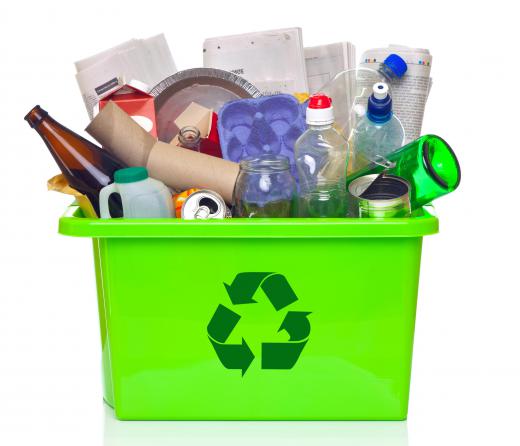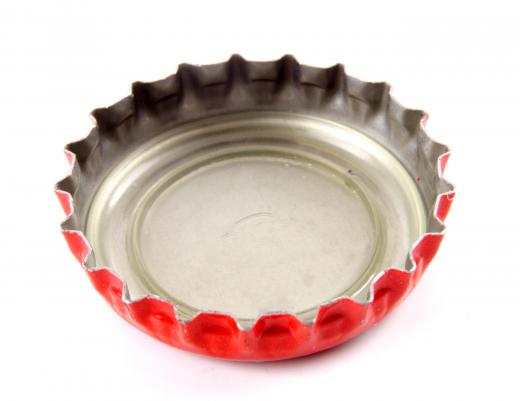Glass recycling is considered by many to be a sustainable activity, in which humans attempt to preserve biodiversity and the environment. Being completely recyclable, glass bottles are an important component of the three R's in sustainability: reduce, reuse, and recycle. Glass can be crushed into a basic form called cullet, and mixed with other raw materials, including silica sand, soda ash, and limestone. This mixture is heated until it melts, turning into liquid glass that can be formed into new shapes. After the glass manufacturing process, glass containers are used to hold all kinds of food and beverages, and can be used over and over again.
The glass recycling process has specific standards that start from the consumer side. Before curbside and other recycling programs send vehicles to take recyclable glass containers to the factory, homeowners are encouraged to sort appropriate containers into bins for pickup, which is the first step in the recycling process. A sorting process with restrictions rules out container glass that is considered to be tainted; that is, those that contain foreign materials like ceramics and light bulbs. Glass with foreign material in it is no longer considered to be pure, would create issues in the recycling process, and is therefore ultimately considered unrecyclable.

If homeowners have not done this already, the recycling plant must then clean containers, removing labels and caps, before the remainder is crushed into cullet. Caps and labels that are not removed may damage the glass-making machines during the manufacturing process or end up making new glass containers of low quality, which consumers are then unwilling to buy and use.

The glass manufacturer is an essential player in the glass recycling process. Primarily, it bulk exports manufactured glass containers to product producers, who use those containers as packaging for their goods. The goods are imported as wholesale retail to the consumer, who buys the good for personal use. At this point, the user is responsible for choosing whether to reuse, throw away, or recycle the packaging.

If the user chooses glass recycling, he follows protocol by removing caps and labels before placing the glass containers in the appropriate bins, to be taken to the recycling plant where it is either processed or determined unfit for recycling. At the plant, the process starts all over again whereby crushed cullet is recombined with silica sand, soda ash, and limestone to make more glass containers to perpetuate the cycle.
